Is it just me or has there been an explosion of healthy snacks in the last couple of years? When I think back to the days when we thought Power Bars were revolutionary, I realize how many wonderful choices we have now. I had the opportunity to test some new products this year and thought I’d round up my favorites. I don’t know if they are all new, but they were new to me.
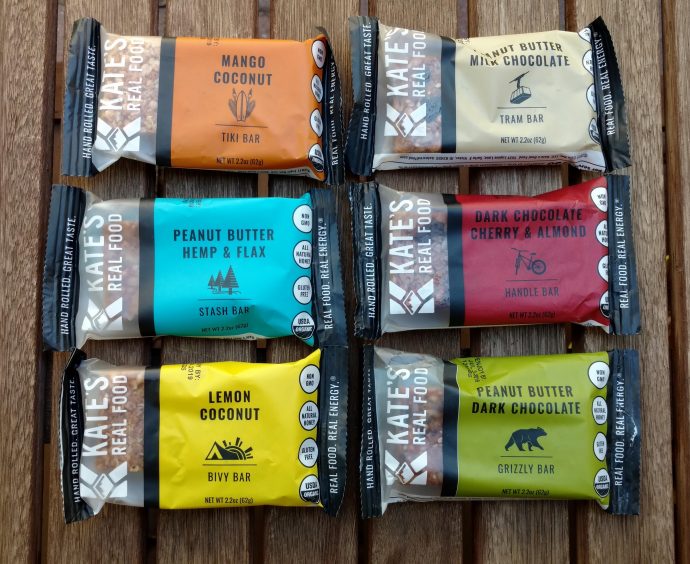
Kate’s Real Food Organic Bars
One of my favorite discoveries this year was Kate’s Real Food brand. I have burned out on so many energy bars that I’m filled with dread every time I have to stock up. Kate’s saved the day with a bar that has actual crunch and delicious flavor. I quickly tire of the soft textures of so many backpacking foods but Kate’s bars use organic brown rice crisps (think Rice Krispies) to provide a satisfying crunch. All of her products use gluten-free, non-GMO and organic ingredients and are sweetened with honey. Some are vegan if you accept honey. The bars are around 300 calories each with six to eight grams of protein (total counts for two servings per bar). Peanut butter or almond butter form the basis of the bars. There are a variety of flavors with fun names inspired by the area and outdoor activities in Idaho, especially skiing. My favorite bars were the Mango Coconut (Tiki Bar), Lemon Coconut (Bivy Bar) and Peanut Butter Hemp and Flax (Stash Bar).
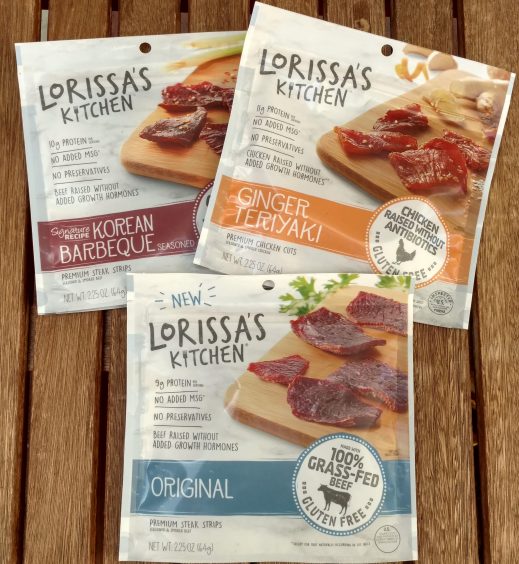
Lorissa’s Kitchen Premium Steak Strips
Lorissa’s Kitchen tasty treats are great for boosting protein on the trail with 10 grams of protein, 2 grams of fat, 6 grams of carbohydrate and 80 calories per serving. The strips are made with 100% grass-fed beef with no added nitrites, MSG, preservatives or growth hormones. The texture of the jerky was good; moist, tender and chewy. I always prefer the plain flavors of jerky products, especially on a long, high-altitude trail where I never know what back-flips my stomach might be doing. True to form, I liked the Classic flavor the best. The Korean BBQ and Chicken Teriyaki had good flavor if you’re looking for jerky with more complexity.
Lorissa’s Kitchen also makes beef sticks in Original, Smoky Sweet and Jalapeno flavors. I love the convenience and ease of consumption of a beef stick when I want a savory snack on the trail. While I enjoyed these, I preferred the jerky, probably due to the fat content that tasted a bit greasy. The beef stick contains 11 grams fat (6 grams of protein, zero carbs, 130 calories) while the jerky strips have only 2 grams of fat. People following a ketogenic diet might prefer the beef sticks due to the higher fat content.
I like the ingredient list with one exception. The beef, water, cane sugar, sea salt, soy sauce, pepper and pineapple powder are good, wholesome ingredients for the Classic steak strips. The ingredient I don’t care for is “natural flavor” which can be a catchall term for all sorts of unidentified ingredients that are allowed on labels by the FDA. There may not be anything unhealthy in Lorissa’s but it leaves an open question. I hope Lorissa’s will consider removing that term and instead list the exact ingredients.

Joyfull Parmesan Crisps
Parmesan cheese crisps are a wonderful alternative to conventional crackers and the best ones have no ingredients other than Parmesan cheese. Joyfull Bakery crisps are pure Parmesan and pack 9 grams of protein along with 7 grams of fat and 1 gram of carbohydrate in a 100-calorie serving. I love the crunch and distinctive flavor. If they fall apart on the trail, it’s OK as you can still get all the flavor and crunch from the crumbs. There are other brands that have proliferated so keep an eye out and you might find others. Just check the ingredient list as some manufacturers sneak other ingredients in.
These are actually easy to make yourself if you have the time to follow a simple recipe. Just grate the Parmesan cheese, place a tablespoon or more on a cookie sheet and bake at 400 degrees F. Keep them in an airtight container to maintain their crispness.
Another good cheese product is Moon Cheese, which is similar to freeze-dried cheese. It is made from different kinds of cheese such as cheddar, jack, gouda and mozarella.
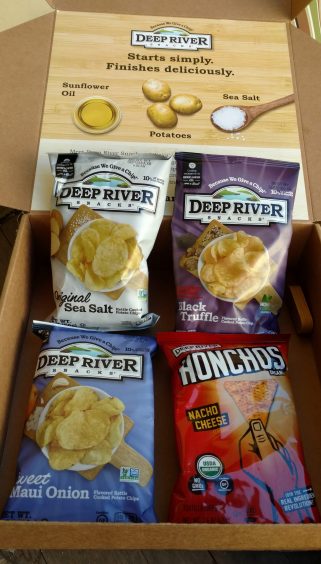
Deep River Potato Chips
As much as I try to follow a wholesome, healthy diet, I do have some weaknesses and one of those is a love of chips. I seem to especially crave them when I’m coming off the trail, probably because I’m longing for salt. Like with jerky, I prefer plain chips as the flavored ones often taste like chemicals with an ingredient list to match. Deep River Snacks Sea Salt Kettle Cooked Potato Chips are a good example of my favorite kind of chip: clean ingredient list (potatoes, oil, and salt) and satisfying crunch. The chips are cut thicker than regular chips and that gives them the extra crunch. If I stray from the plain flavor at all, I’d tend toward salt and pepper. I was shocked to see the ingredients for other mass marketed salt and pepper brands that can contain sugar, dextrose, maltodextrin, yeast extract, natural flavor and other unnecessary items. Deep River Sea Salt and Pepper chips contain just what you’d expect: potatoes, sunflower oil, black pepper, and sea salt. They have many unique flavors such a Black Truffle, Himalayan Sea Salt, Horseradish, Ginger and others.
Eighteen chips have 150 calories, 9 grams of fat, 2 grams of protein and 17 grams of carbs. What can I say? They provide energy and salt, two things a hiker needs at times. And they taste good.
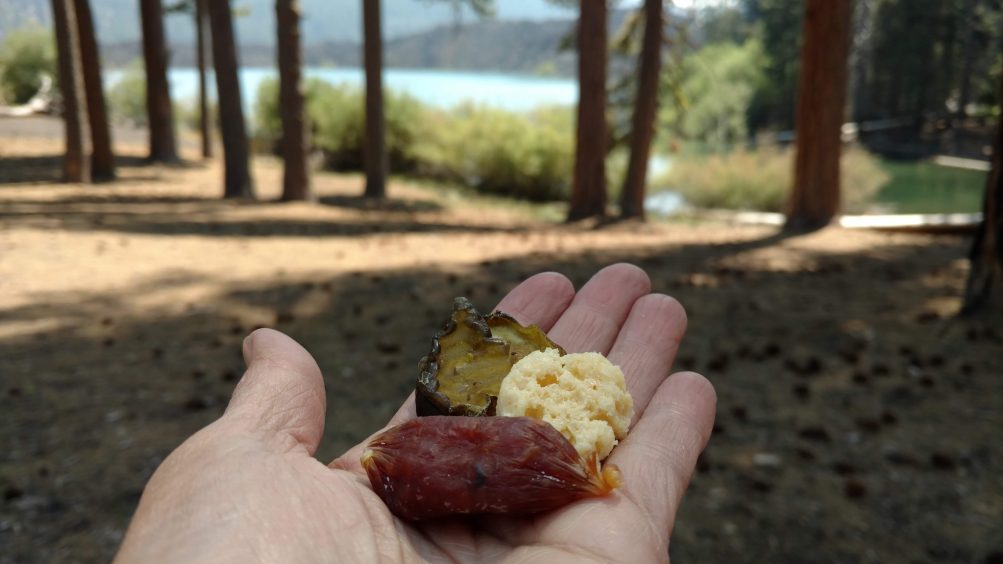
Dehydrated pickle (homemade), Oven Baked Cheese Bites (Trader Joe’s), mini-sausage (Cost Plus).
This is a do-it-yourself food that became one of my favorite backpacking snack foods. Once I get some crunch in my trail diet (see above), one flavor I crave is tartness. It’s easy to pack sweet and savory foods but maintaining tartness from citrus or vinegar is harder to replicate. I heard about dehydrating pickles and why not? Just about any non-fatty, non-dairy food can be dehydrated and pickles are just cucumbers at heart. I bought a jar of bread and butter pickle chips, drained them and set them out on the dehydrator trays. I set the temperature for 135 degrees F and left them overnight (leave them in until crispy to make them more shelf-stable). By morning, they were chewy and so delicious that it was hard to put them down. On the trail, I had to ration them so I didn’t eat them all on the first day. I found that one of my favorite snacks was a combination of Parmesan crisps, jerky and dried bread and butter pickles. My mouth is watering just thinking about it as I write. These could also be chopped up (or just dehydrate relish) for use with tuna.
I tried dehydrating dill pickles and it was a fail (for me). They were unbearably salty and I couldn’t eat them though they might have been OK if they were added to other foods such as tuna. I’ve tried dehydrating corn salsa and other sweet/salty food that were successful. If you have a dehydrator, start experimenting and add more flavor to your backpacking diet.
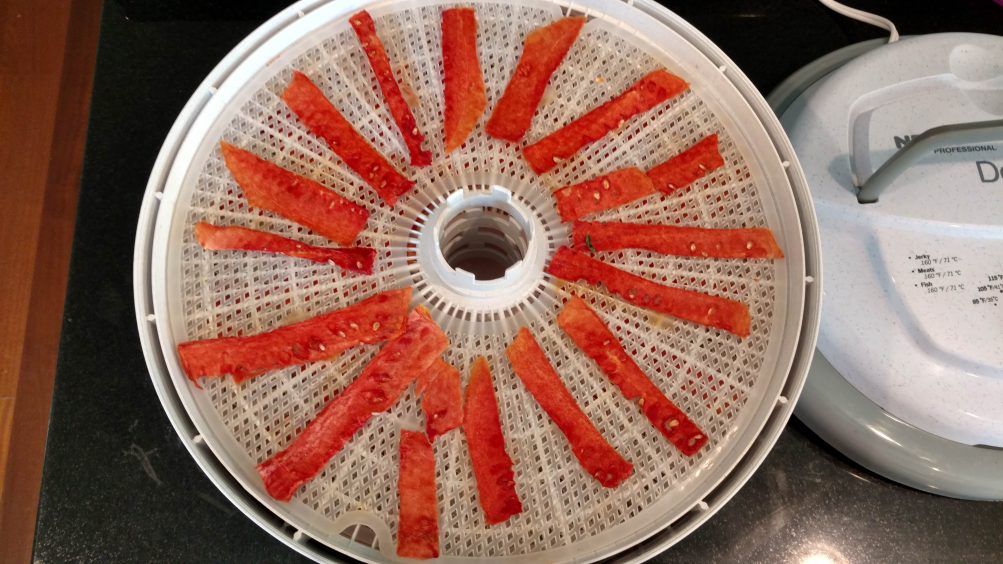
Watermelon strips on the dehydrator tray.
While we’re on the topic of dehydrated treats, I couldn’t leave out a classic DIY snack, dehydrated watermelon strips. These are like candy and if you can make them last until your next trip, you have more self-control than I. You can dehydrate melon as well.
Slice a 1-2 inch round of watermelon. Remove the rind. Cut in half and then start slicing thin strips. Lay the strips on the dehydrator trays. Set the temperature for 135 degrees F and leave them overnight. They should be crispy. If they aren’t, leave them in the dehydrator until they are. Keep them in an airtight container to maintain crispness. Or just give in and eat them.
Join our Facebook group, Healthy Gourmet Backpacking Food, to keep up with the latest healthy food offerings for the trail.
The Hungry Spork: A Long Distance Hiker’s Guide to Meal Planning by Inga Aksamit
Facebook group: Healthy Gourmet Backpacking Food
Backpacking Chef (for tips on dehydrating)
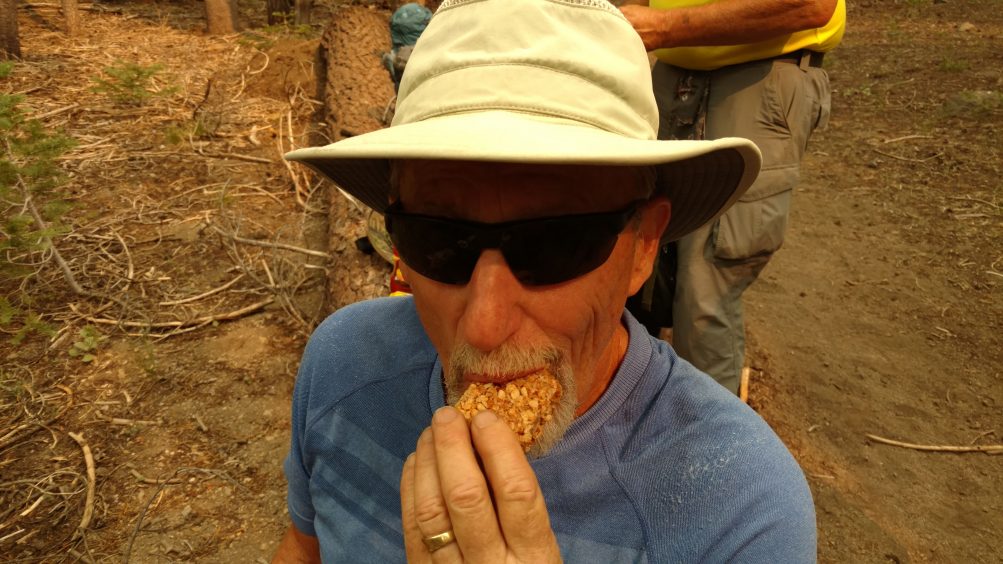
Steve enjoys Kate’s Real Food Organic Bars
All photos by Inga Aksamit, unless otherwise credited.
Disclosure of material connection: I received some samples (Kate’s Lorissa’s, Deep River) for testing purposes while I purchased or made others, but the opinions expressed are solely my own.
 Previous Post
Previous Post

Melissa Gordon says:
Holy moly, these all sound amazing! Great list, thank you…not sure about the dehydrated pickles though, I may have to try those! 🙂